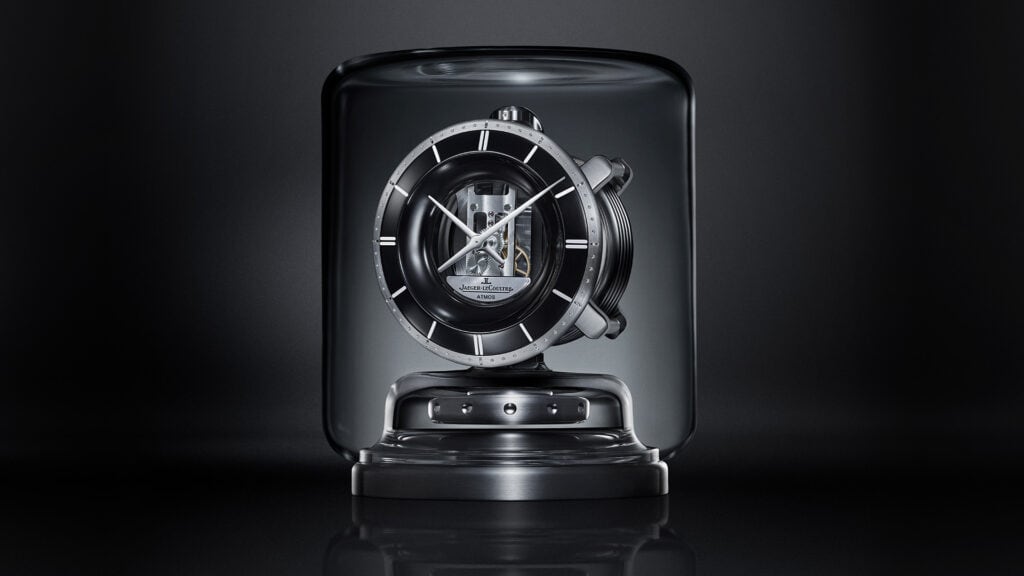Jaeger-LeCoultre is hosting ‘Living on Air’, a free exhibition that will run from 8th to 13th April 2025 at Villa Mozart in the historic centre of Milan.
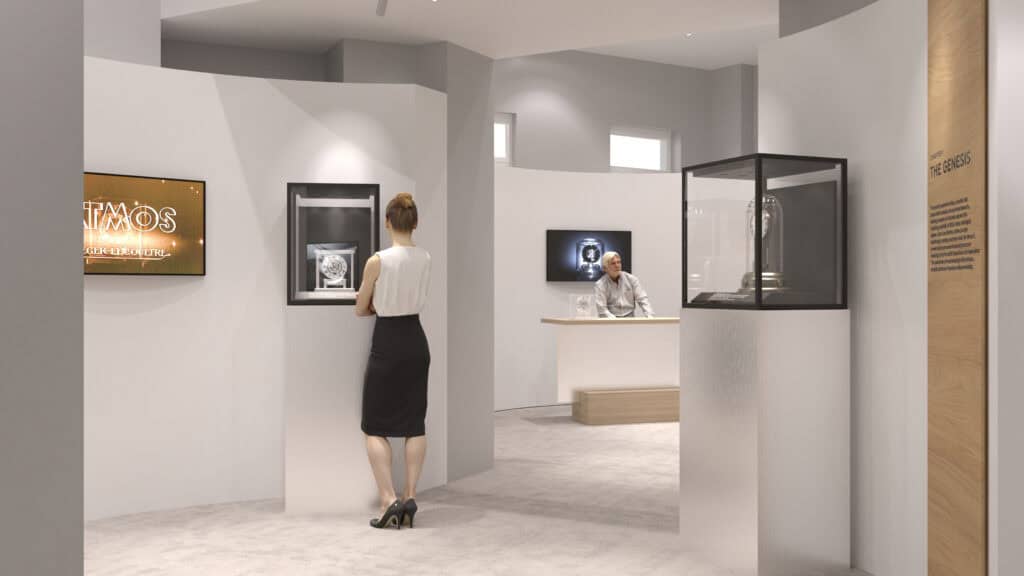
During the exhibition, Jaeger-LeCoultre will unveil a new limited-edition Atmos clock that reflects the contemporary design values of Milan Design Week. As the guardian of the Atmos clock’s remarkable technology for more than 90 years, Jaeger-LeCoultre has continually worked on technical improvements and new developments and, since the 1970s, has invited a series of leading designers and masters of the artistic crafts to reinterpret this mechanical prodigy.
Bringing together an unprecedented collection of 19 different Atmos clocks spanning more than nine decades and supported by archival materials and technical drawings, as well as a watchmaker demonstrating how the mechanism works, ‘Living on Air’ tells the story of this extraordinary object in four chapters.
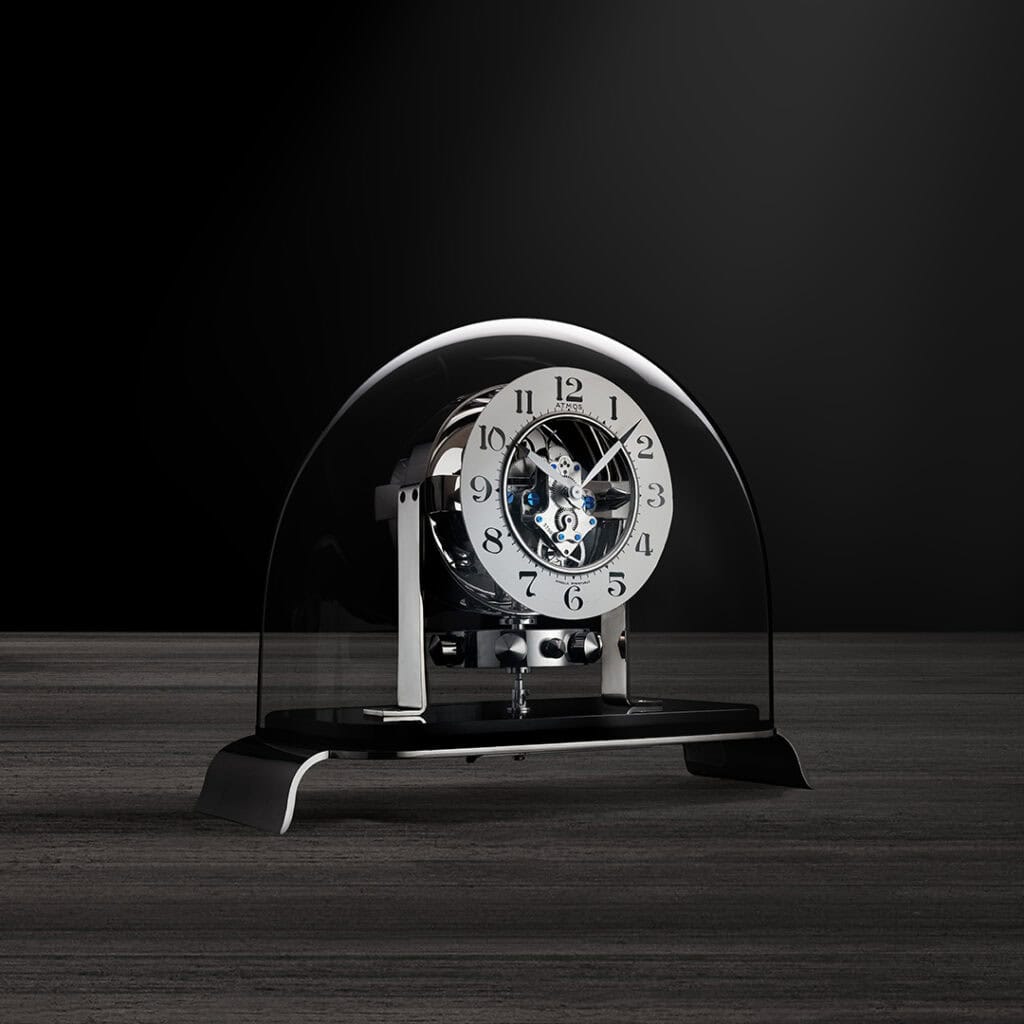
THE GENESIS: The (Seemingly) Impossible Dream
This first chapter traces mankind’s fascination with the idea of perpetual motion machines, with records dating back at least to first-century BC Alexandria, and reveals how, in 1928, Jean-Léon Reutter, a Swiss radiological engineer succeeded in incorporating the principle of perpetual motion into a prototype clock – apparently defying the laws of physics. On buying an early example of the clock – now known as Atmos 0 – Jacques-David LeCoultre realised that, despite the brilliance of the invention, the mechanism required exceptional watchmaking skill to make it viable and invited Reutter to join forces with the LeCoultre & Cie Manufacture to refine it for commercial production.
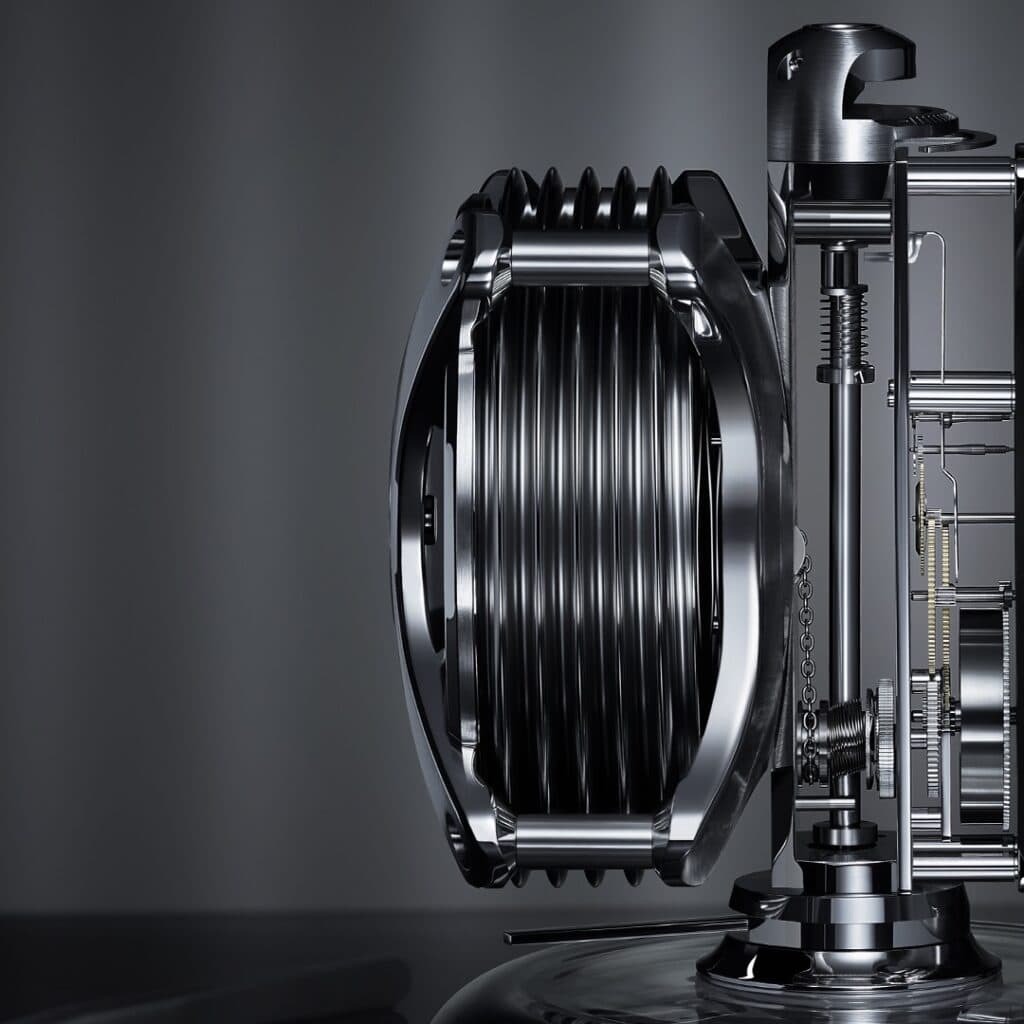
THE MECHANISM: Inside the Atmos
In the second chapter, visitors will discover how the Atmos clock comes closer to perpetual operation than any other mechanism yet created. The energy that drives the clock is supplied by normal fluctuations in air temperature. In live demonstrations, visitors can see how thermal energy is transformed into mechanical energy to power the movement. The secret lies in a hermetically sealed, gas-filled capsule, which is connected to the clock’s drive spring by a membrane. The slightest temperature variation changes the volume of the gas, causing the membrane to expand and contract – ‘breathing’ like the bellows of an accordion – and thus wind the spring.
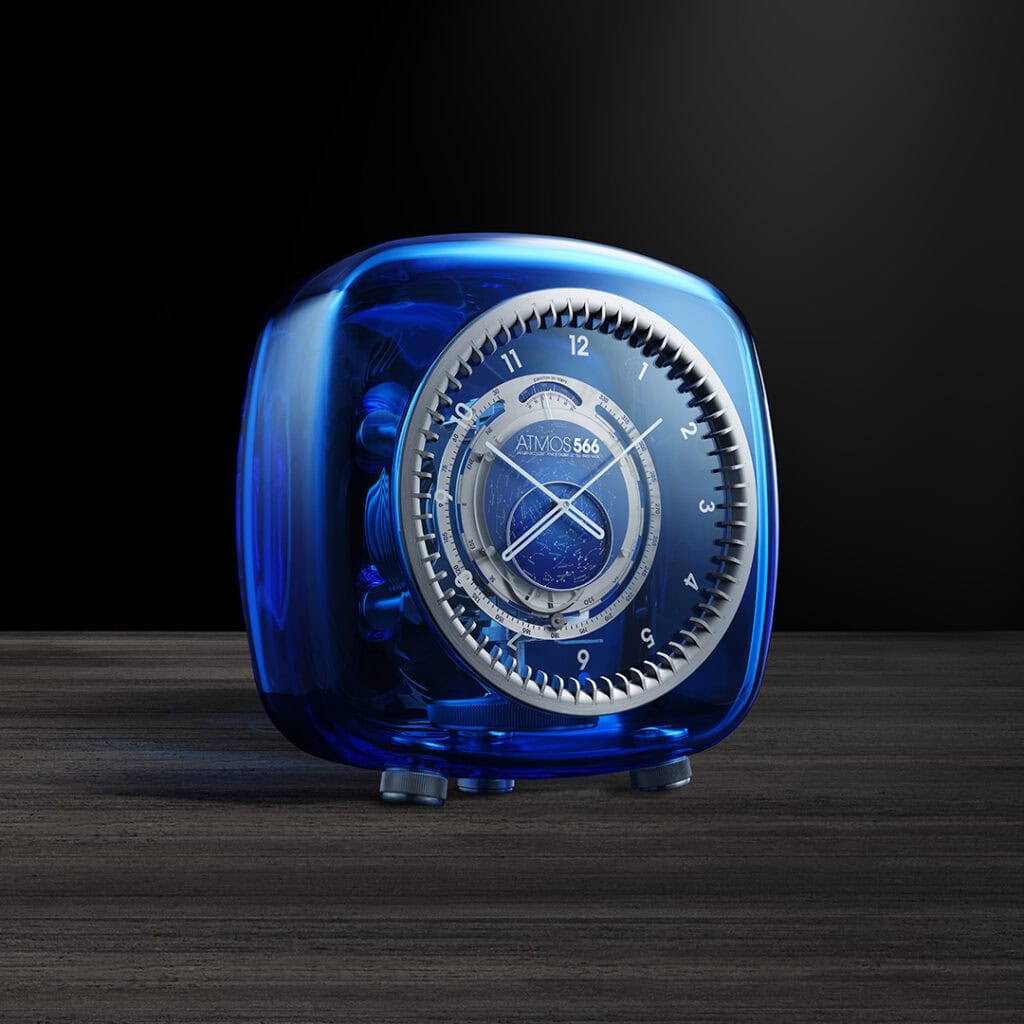
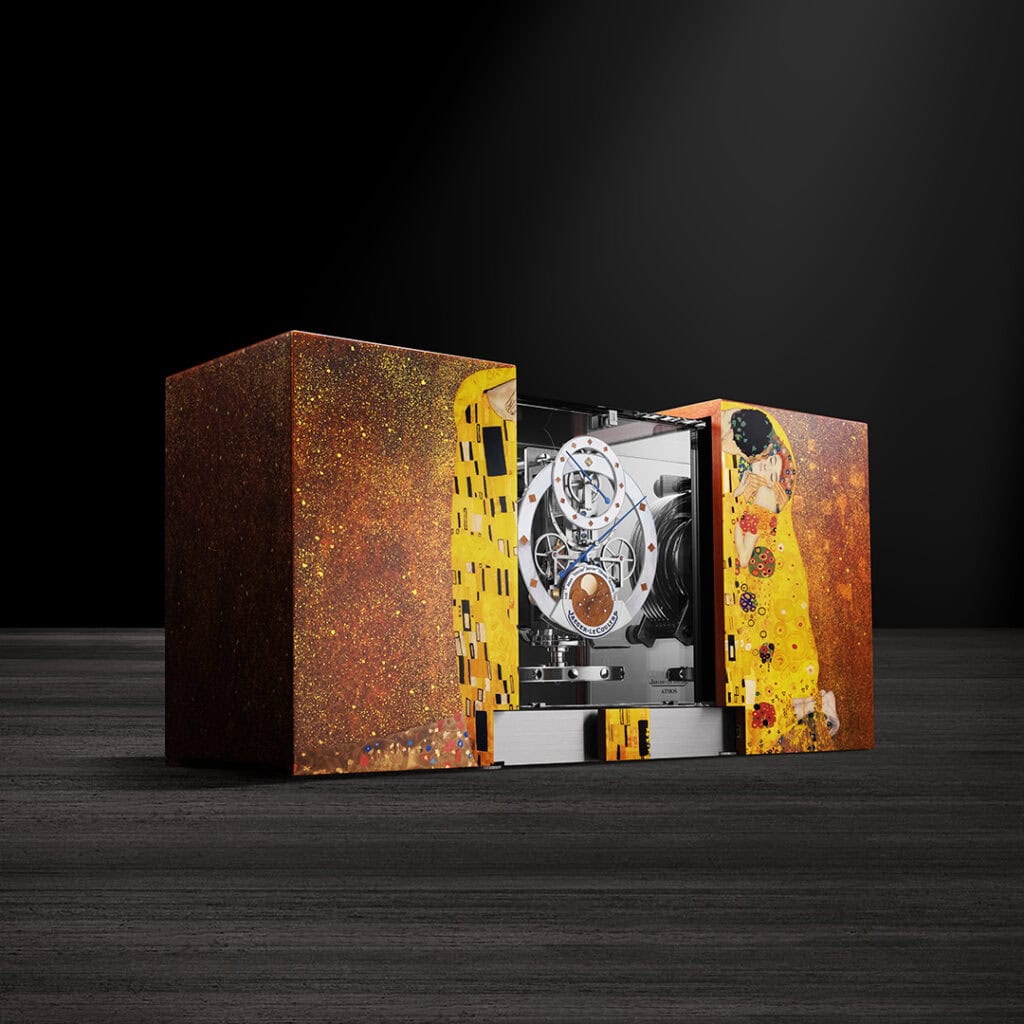
THE DESIGN: Atmos as an Objet d’Art
Chapter three celebrates the decorative crafts that elevate Atmos clocks into works of art, as well as highlighting how Jaeger-LeCoultre’s collaborations with leading contemporary designers have transformed the Atmos. Among the exhibits is a series of models created in collaboration with the renowned designer Marc Newson and exceptional examples of Atmos cabinets created by masters of wood marquetry and straw marquetry.

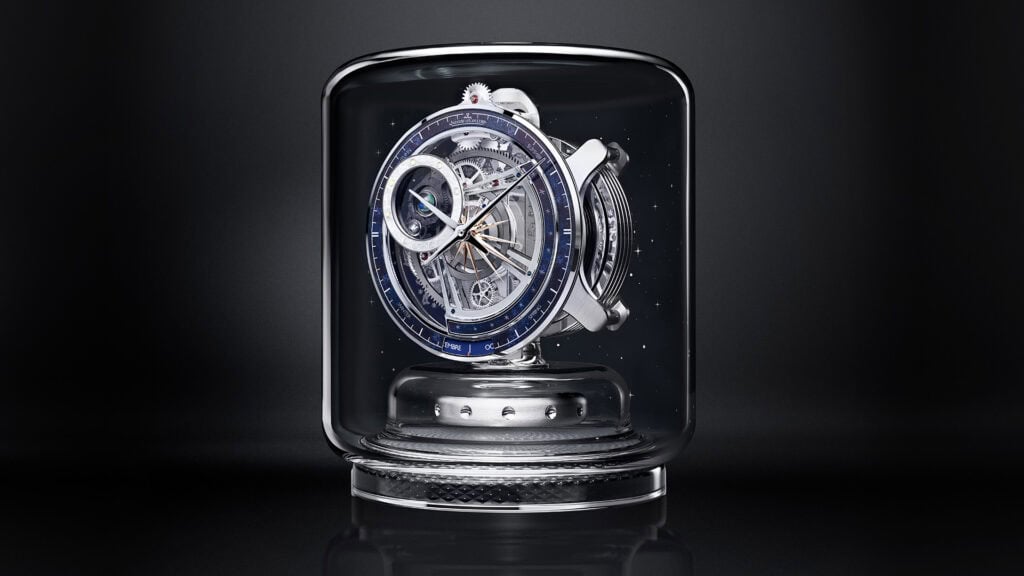
THE COMPLICATION: Beyond Timekeeping
In the final chapter, visitors will discover how Jaeger-LeCoultre’s engineers solved the problem of adding functions to the clock without increasing energy consumption. They discovered that the ideal complications were those based on the long, slow cycles of the astronomical phenomena that lie at the origin of time measurement – such as the moon phases and seasons. Among the exhibits is the most complicated Atmos yet made, the Atmos Tellurium (above right). Incorporating a tellurion – a three-dimensional mechanical mobile that precisely reproduces the true cycles of the Earth, Sun, and Moon – the clock also indicates the corresponding months and seasons with a zodiacal calendar, needing no adjustments until the year 2412 (excluding for seasonal changes).
More than nine decades after its invention the Atmos clock remains a unique and emotionally resonant keeper of time – a splendid homage to design and technical virtuosity that captivates with the beauty of its form, the serene movement of its balance wheel and the mystery of its workings.
‘Living on Air’ runs between the 8th and 13th April 2025 at Villa Mozart (First Floor), via Mozart 9, Milan and is open from 11.00 to 19.00 (except on Wednesday 9, from 11.00 to 18.00). Visitors may register online in advance at Jaeger-LeCoultre or on arrival at the exhibition.


